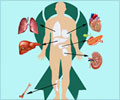A new gene therapy transplantation technique aids in releasing molecules that can heal tissues and regenerate cells of various neurodegenerative diseases.

‘Transplanting genetically engineered stem cells into brain ventricles can release molecules that aid in tissue healing and regeneration and thereby, treating various neurodegenerative diseases.’





The research was performed for the first time at San Raffaele Telethon Institute for Gene Therapy (SR-Tiget) with the collaboration of the Dana-Farber/Boston Children’s Cancer and Blood Disorders Center. The study was published in Science Advances.The scientists have been guided by Alessandra Biffi, supervisor of a research unit at SR-Tiget and director of the Gene therapy program at Dana-Farber/Boston Children’s.
The technique has been tested on an experimental model for a metabolic disease and might have future therapeutic applications for other neurodegenerative diseases in which microglia cells play a role.
The study was supported also by the European Commission through an ERC grant won by Alessandra Biffi.
This study has its roots in Alessandra Biffi’s long-standing interest in lysosomial storage diseases (LSDs), a heterogeneous group of hereditary metabolic diseases caused by a genetic mutation preventing cells from producing enzymes which are fundamental for their metabolism.
Advertisement
The standard therapeutic approach, which is often the only one at hand consists in the injection in the blood stream of the missing enzyme. That, though, is ineffective in case the patient has already shown neurological problems - in fact, the blood-brain barrier prevents the enzyme from reaching the brain, where neurodegeneration continues.
Advertisement
In an ongoing clinical trial performed at SR-Tiget to treat metachromatic leukodystrophy (a neurodegenerative LSD), blood stem cells are extracted from the patients’ bone marrow, genetically engineered so as they regain the ability to produce the missing enzyme, and then injected back into the bloodstream.
Being able to cross the blood-brain barrier, the cells reach the brain and begin their therapeutic action.
Timing, though, is a key element. Gene therapies administered through the blood are effective only if they act in advance. Cells, in fact, need time to reach the brain and engraft into the nervous tissue. That is why at the moment only patients who are still asymptomatic can be treated.
The new technique designed by Alessandra Biffi’s team and discussed on today’s issue of Science Advances could change everything.
"Transplanting stem cells into brain ventricles quickens the engraftment process and in the future could be a viable therapeutic option for patients showing the first symptoms, too" says Alessandra Biffi. But the research results extend beyond the timing question.
"Our data shows for the first time that transplanted blood stem cells, once they reach the brain, are able to differentiate into microglia-like cells. These cells remain exclusively in the central nervous system".
This means that with such technique we can quickly generate a population of genetically engineered cells exclusively in the ill nervous system. From their position, these cells can release therapeutic molecules, helping the tissue to heal and regenerate, and might have potential application in a variety of neurodegenerative diseases.
Source-Eurekalert














